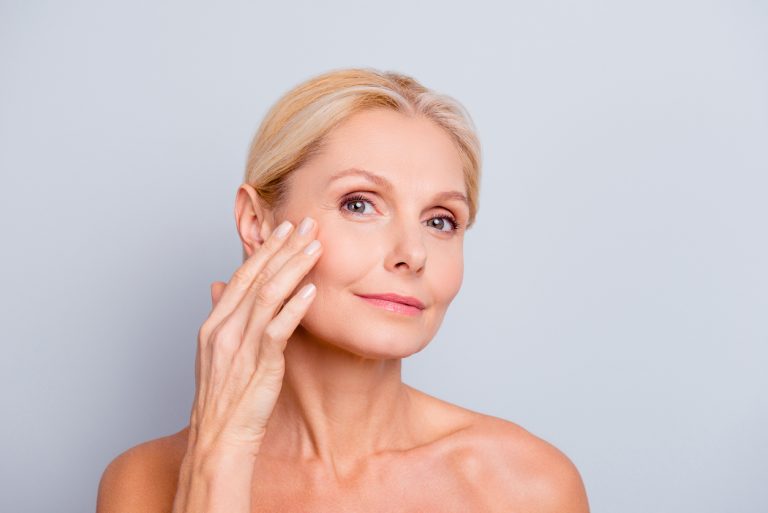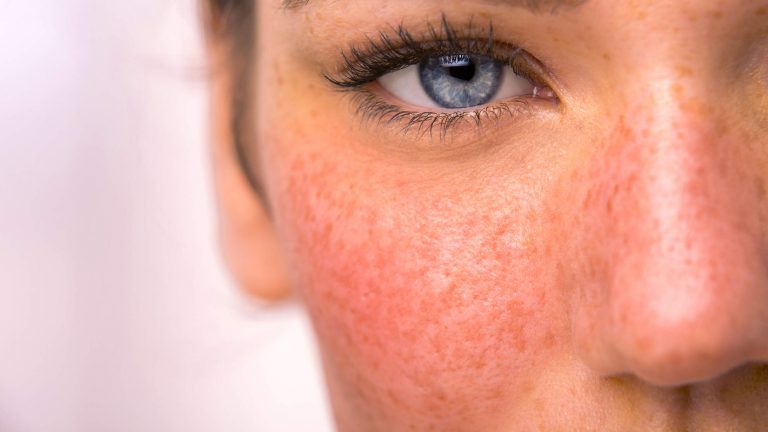
How menopause affects your body
Menopause is a process that will happen to all women at some point in their life. It is the time when you stop experiencing your monthly period, and it is most often the end of the reproductive lifecycle.
Dr Michael Rich is a specialist dermatologist who has been performing tumescent liposuction for over 30 years. Find out if Liposuction is suitable for you at ENRICH Clinic.
At ENRICH Clinic, we have a wide range of dermatological and cosmetic body treatments tailored to individual body and patient needs.
At ENRICH Clinic, our treatments are performed by our medical team consisting of doctors, nurses, and dermatologists and are tailored to each patient’s skin health needs.
ENRICH Clinic is committed to your skin health and well-being with a range of dermatological & cosmetic treatments tailored to the individual. Our treatments are performed by our medical team consisting of doctors, nurses, and dermatologists.
Skin health is essential for everyone. ENRICH Clinic has a wide range of technologies and dermatological solutions to help you achieve your skin care goals.
Spider veins are veins that have become dysfunctional and are no longer serving their purpose, that is, the vein is unable to effectively transport blood, but is instead collecting it. Treatments for spider veins are reasonably quick, painless, and are extremely effective.
You may be wondering how to get rid of spider veins on the legs or face, searching for a quick treatment for spider veins. Treating spider veins is not as simple as a special cream or exercise – spider veins require a specialised treatment that can only be provided by a clinic and a trained doctor.
While spider veins themselves are not dangerous, a spider vein is a sign of other vascular activity. This means you’ll need to be examined to see what else may be going on. Here we explain why you have spider veins, and overview effective treatments for spider veins and varicose veins.
Getting a basic rundown of how your circulation works can make it easier to understand why spider veins appear. You may remember from high school biology that your blood only goes in one direction through a vein or artery.
Here we are only discussing veins, but arteries are just bigger versions of veins, so the same generally applies.
Veins are like a map of one-way streets, leading to or from the heart. Veins have one-way valves on their walls, which stops the blood going backwards with gravity.
There are veins deep inside our bodies, and veins closer to the surface. The superficial veins nearest our skin drain into the deeper veins through a special network of junctions, like small streams into bigger rivers.
The venous system is designed to pump blood through your body, and once it’s delivered the oxygen and other goodies, get it out of there.
When a vein becomes weak, it stops functioning properly. A dysfunctional vein may collect and hold onto more blood than healthy veins, which causes the vein to bulge. This puts a strain on the vein’s valves, which will eventually start to fail. The vein is then described as being ‘incompetent’. That is, it can’t do its job properly.
Incompetent veins come in the same sizes and locations as healthy veins. The ones we can see are called spider veins, reticular veins, and varicose veins.

You cannot treat spider veins without addressing other existing incompetent veins, if you have any. This is because a varicose vein, for example, causes spider veins by not managing blood flow and pressure correctly. If you don’t treat the underlying varicose vein, you will just end up with more spider veins.
Dysfunctional veins will not always be visible, which is why having a thorough examination is so important – spider veins can be a sign of a deeper circulation problem. Symptoms of deeper dysfunctional veins may appear, such as feelings of heaviness in the legs, or aching, burning, throbbing, cramping and restless legs.
Diagnostic procedures to determine the state of your veins, such as ultrasounds, are non-invasive and are done at ENRICH Clinic.
It is still a bit of mystery why a vein may stop working properly. We do know that circulation problems tend to run in families, so if your relatives have varicose or spider veins, it’s likely that you will too.
These incompetent veins put a lot of pressure on other surrounding veins because they aren’t doing their bit in your system. It’s like having a lazy co-worker – you end up doing more of the work, causing you more stress and wearing you out faster.
Firing the lazy co-worker means the rest of the team can take on the load more evenly, and the system starts working more efficiently again: circulation improves.
Spider veins do not serve you, and many people feel they are unsightly. This means there is no reason to keep them sticking around, whether you care about how they look or not. Spider veins aren’t healthy veins.
Your body has an incredible ability to heal itself, and in some cases varicose veins may go away by themselves instead of being removed. A varicose vein that appears during pregnancy is a good example of this. It is well known that after about three months post-pregnancy, the varicose veins tend to disappear.
But, this doesn’t mean the vein wasn’t damaged from its traumatic time under such pressure. It is also well observed that future pregnancies make varicose veins worse, and they may not disappear from view next time.
This process indicates that once a vein ‘goes’, it is a slow deterioration that appears to be irreversible. When you can see a varicose or spider vein, it’s because it’s too late for your body to heal it by itself. That time has passed.
Your body is repairing itself all the time, so you can rest assured that your body is doing its best to take care of all your other veins. You can help by taking some of these incompetent veins out of commission, allowing the rest of your circulation to do its important work without a lazy co-worker.
It also pays to have a healthy lifestyle, to care for your circulatory system and protect your veins.
Early removal of spider veins and varicose veins is preferable for many reasons: it’s easier to remove smaller varicose veins, being less complicated with good outcomes. Late diagnosis and treatment for spider veins means a greater risk of complications and possibly irreversible disease.
If you are planning on becoming pregnant and have varicose veins, it’s advisable to have the varicose veins removed first – they will get worse during pregnancy. This means the vein becoming less and less able to cope under the strain of daily life.
Spider veins should only be removed after varicose veins have been successfully treated.
At ENRICH Clinic, we have effective treatments for spider veins and varicose veins using the latest technology and techniques. We do not treat varicose veins at ENRICH Clinic however we do provide a referral to a specialist if required.
Sclerotherapy is a treatment for spider veins or varicose veins whereby a special liquid is injected into an abnormal vein. The vein doesn’t like this liquid, gets inflamed, fusing together, which results in the vein being unable to contain blood.
The injured vein is then reabsorbed by the body and disappears over several months. A vein may need more than one sclerotherapy removal treatments to fully collapse and disappear.
We are spider vein experts.
Contact us for a consultation
ENRICH Clinic
*With all surgeries or procedures, there are risks. Consult your physician (GP) before undertaking any surgical or cosmetic procedure. Please read the consent forms carefully and be informed about every aspect of your treatment. Surgeries such as liposuction have a mandatory seven-day cooling-off period to give patients adequate time to be sure of their surgery choice. Results may also vary from person to person due to many factors, including the individual’s genetics, diet and exercise. Before and after photos are only relevant to the patient in the photo and do not necessarily reflect the results other patients may experience. Ask questions. Our team of dermatologists, doctors and nurses are here to help you with any of your queries. This page is not advice and is intended to be informational only. We endeavour to keep all our information up to date; however, this site is intended as a guide and not a definitive information portal or in any way constitutes medical advice.
"*" indicates required fields
Combining Dr Rich’s dermatological skill with his knowledge of restorative skin regimes and treatments, the ENRICH range is formulated to help maintain and complement your skin. Our signature Vitamin C Day & Night creams are now joined by a Vit A, B,&C Serum and a B5 Hyaluronic Gel, both with hydration properties and much, much more.

Menopause is a process that will happen to all women at some point in their life. It is the time when you stop experiencing your monthly period, and it is most often the end of the reproductive lifecycle.

Blood-vessel conditions like rosacea, facial redness and visible veins respond extremely well to Excel V laser treatments.

We can help you with your pesky or ongoing skin problems. Don’t suffer anymore! We have the latest treatments for just about everything.

We can treat spider veins very effectively with sclerotherapy in our clinic so you can feel confident with smoother skin.
Subscribe to the ENRICH newsletter and receive latest news & updates from our team.
Enrich Clinic acknowledges the Traditional Lands of the Wurundjeri Woi Wurrung and Bunurong peoples of the East Kulin Nations on which we work and trade. We pay respect to their Elders past, present and emerging. We extend our acknowledgement and respect to the LGBTQIA+ community who we welcome and support. Read our full Acknowledgement Statement here
